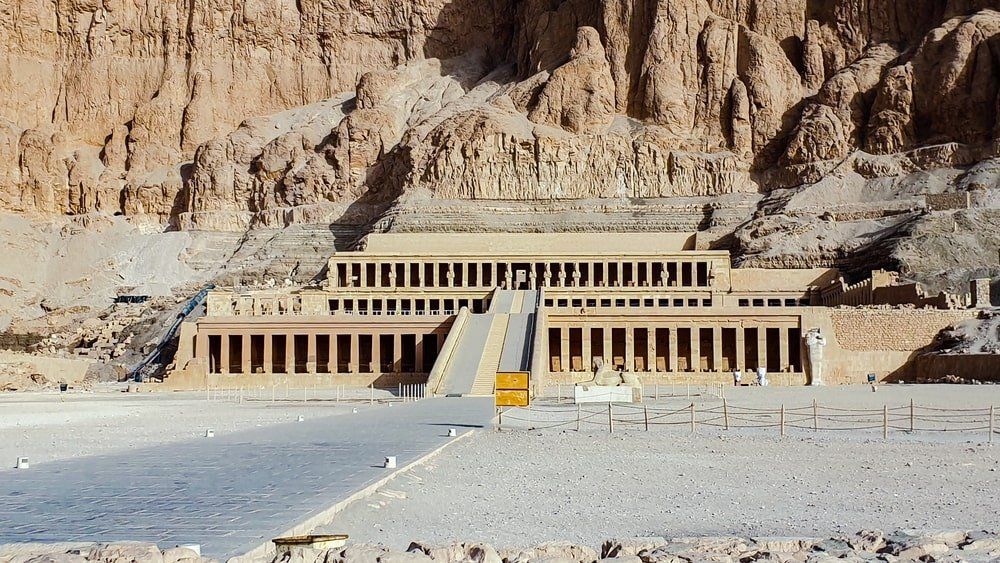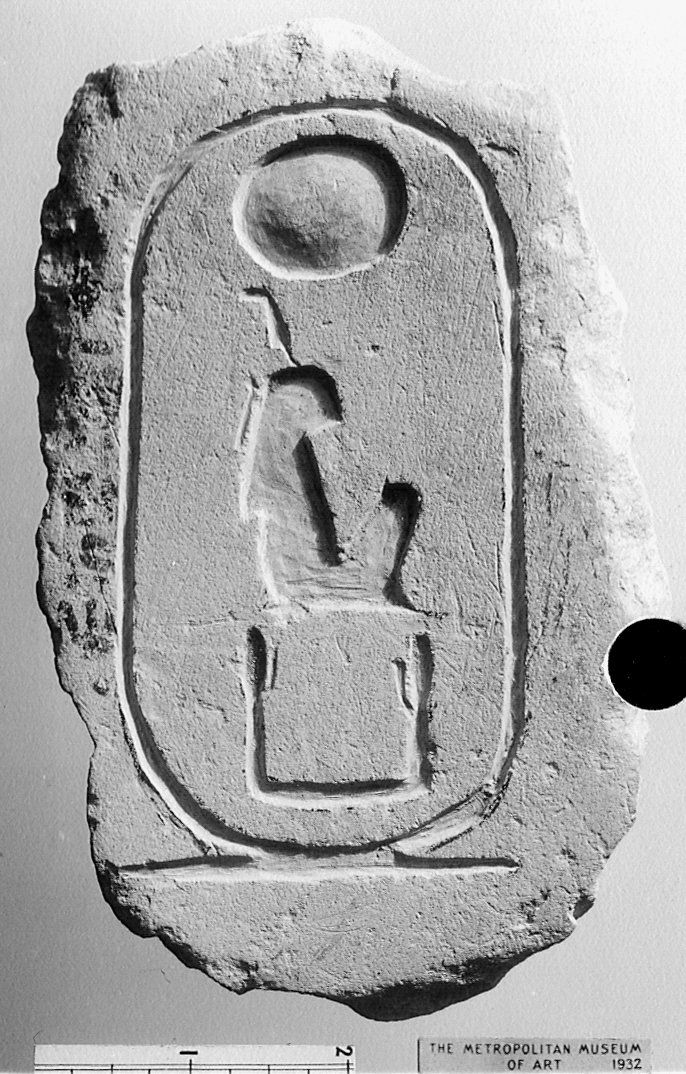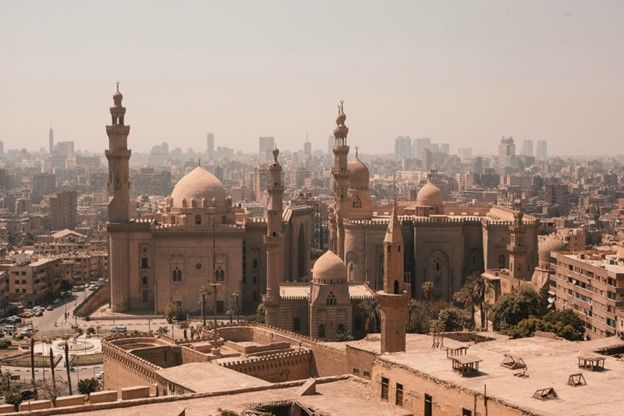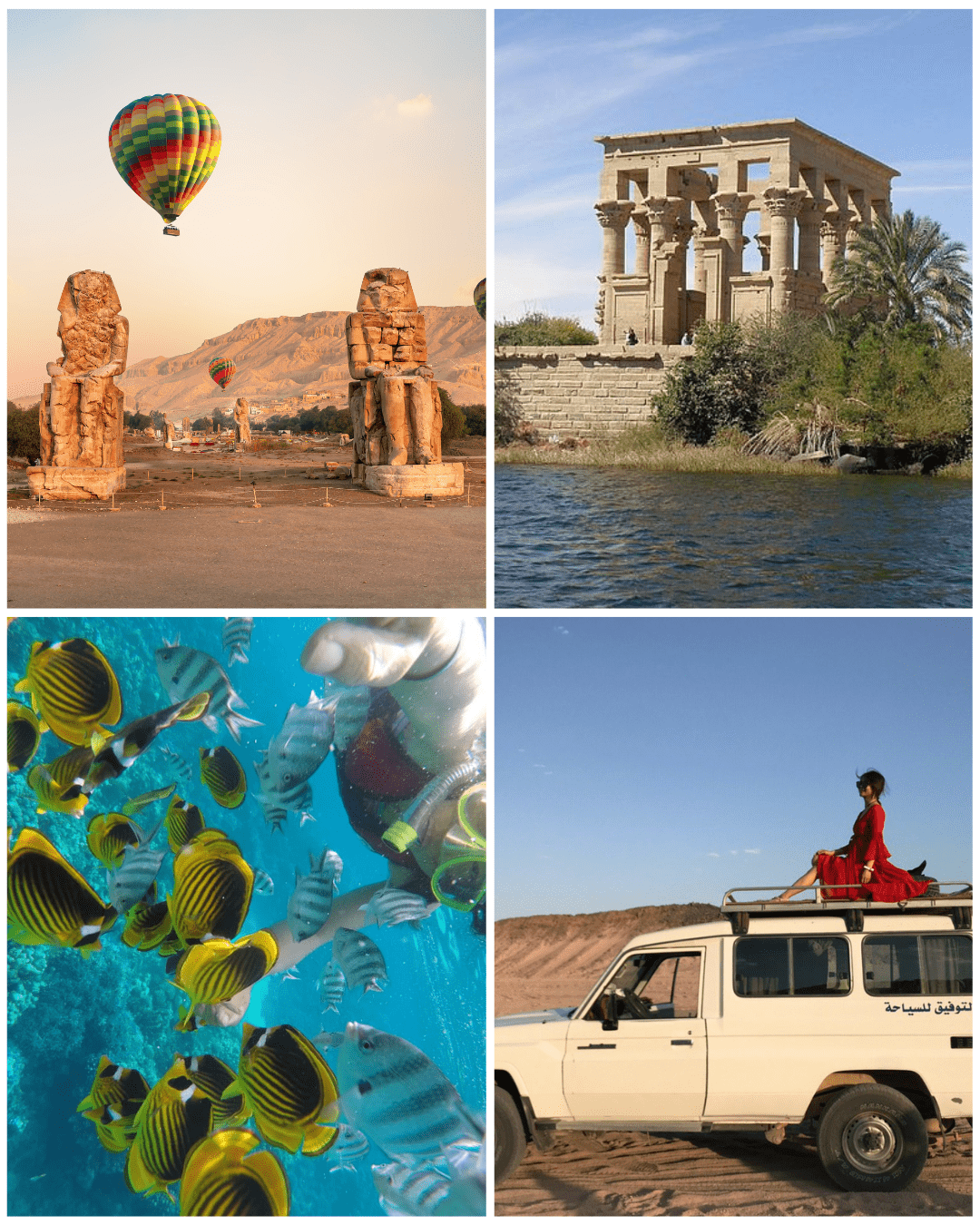Everything you need to know about Queen Hatshepsut
Hatshepsut was one of the most powerful and successful female pharaohs in ancient Egyptian history. She reigned for over twenty years, and during her time on the throne she managed to make great strides in terms of trade, diplomacy, and monumental building projects. Despite this impressive record, much about Hatshepsut's life remains a mystery. In this blog post, we will take a look at everything we currently know about Queen Hatshepsut and her amazing legacy. Stay tuned!
Who was Hatshepsut?
Hatshepsut, also spelled Hatchepsut in Egyptian; also Hatchepsut. After Sobekneferu, she was the second confirmed female pharaoh. (Various women in Ancient Egypt could have also ruled as regents or pharaohs before Hatshepsut. This is as far back as Neithhotep, around 1,600 years prior.
Hatshepsut was elected to the Egyptian throne in 1478 BC. Hatshepsut was the principal wife to Thutmose II as she married him at the age of 12 and was initially the regent of Thutmose III. He was a son of Thutmose I by another wife, and the first male heir. Thutmose III had already inherited the throne when he was two years old. Hatshepsut ruled by asserting her lineage, as she is the only child of Thutmose 1 and Ahmose.
Thutmose II, her husband, was the son of Thutmose 1 and a secondary woman who was named Mutnofret. Hatshepsut couldn't bear more children after having their daughter. Thutmose II would be fathered by Iset, a secondary woman, and would become Hatshepsut's third child, Thutmose III.
Hatshepsut Reign
While there are many ancient records that document her reign, Hatshepsut is thought to have served only as a cogent between 1479 and 1458 BC. This was during the seven-to-twenty-one years of the reign previously identified by Thutmose III. Egyptologists today agree that Hatshepsut was the first pharaoh.
Ancient authors described Hatshepsut as having a reign lasting around 21 years. Julius Africanus and Josephus both cite Manetho’s king list. It mentions Amessis, or Amensis, who is identified (from context) as Hatshepsut. Her reign is described in Josephus' work as lasting 21 years, nine months, while Africanus claims it was 22 years. The history records of Hatshepsut's reign end at this point, as Thutmose III's first major foreign campaign was dated to his 22nd anniversary, which would also have been Hatshepsut’s 22nd birthday as pharaoh.
It is difficult to date the start of her reign. According to the high and low estimates, her father's reign began around 1526 BC. It is not possible to determine with absolute certainty the length of Thutmose I's and Thutmose 2's reigns. Hatshepsut's 14-year reign would have seen her ascend to the throne fourteen years after Thutmose I, her father, was coronated. Her ascension would have taken place 25 years after Thutmose II's coronation. Hatshepsut might have been in power as early or late as 1512 BC.
Hatshepsut was aware of the controversy surrounding her power grab and sought to defend it. She cited her royal lineage and claimed that her father had named her his successor. In statues and paintings from that time, Hatshepsut requested that she be depicted as a male patriarch with large muscles and a beard. However, in other images she was wearing traditional female attire. Hatshepsut was surrounded by her supporters, including Senenmut who was her chief minister. Many have suggested that Senenmut could have been Hatshepsut’s lover. However, there is not enough evidence to support this suggestion.
Hatshepsut's earliest attestation as pharaoh is in the tombs of Ramose, Hatnofer. There, a collection grave goods included a single pottery pot jar or amphora taken from the chamber of the tomb. The date was "Year 7". A second jar from the same tomb was found in situ by the 1935-36 Metropolitan Museum of Art Expedition on a hillside close to Thebes. It was stamped with the seal of Hatshepsut, while two others bore the seal of The Good Goddess Maatkare. The dating of the amphorae is not disputable. It was "sealed into [tomb's] funeral chamber by the debris of Senenmut's tomb," which indicates that Hatshepsut had been recognized as the king and queen of Egypt in Year 7.
Hatshepsut Accomplishments
Trade Routes
Hatshepsut created the trade networks that were destroyed by the Hyksos occupation of Egypt during the Second Intermediate Period. Hatshepsut founded the trade networks that were disrupted by the occupation of the Hyksos in Egypt during the Second Intermediate Period.
Hatshepsut's Punt delegation brought back 31 live myrrh plants. Hatshepsut's Punt delegation returned with 31 of live myrrh plants.
Hatshepsut was able have the expedition details in relief at Deir el-Bahari. The documentary is well-known for its accurate portrayal of Queen Ati, Queen of Land and Punt. It is possible she led military expeditions against Nubia and Canaan.
Hatshepsut Buildings

Hatshepsut, one of the most prolific builders of Ancient Egypt, was responsible for hundreds of construction projects in both Upper Egypt as well as Lower Egypt. Her buildings are more impressive and numerous than those of her Middle Kingdom counterparts. Some of her projects were later claimed by the pharaohs. Ineni, a great architect, was her employer. Ineni had also worked for her father and her husband Senenmut, the royal steward. Her reign produced so much statuary that nearly every major museum in the world with Ancient Egyptian artifacts had Hatshepsut statues among their collections. For example, the Hatshepsut Room at New York City's Metropolitan Museum of Art focuses exclusively on some of these pieces.
Hatshepsut, following the tradition of many pharaohs had monuments built at the Temple of Karnak. Hatshepsut also restored the original Precinct Of Mut at Karnak, which had been destroyed by foreign rulers during their occupation of Egypt. Later, it was destroyed by other pharaohs who took pieces to use in their personal projects. Restoration is underway at the precinct. At the temple's entrance, she had twin obelisks that were the highest in the world at that time. The one that remains is the oldest surviving ancient obelisk of its kind on Earth still stands. The other has been toppled and broken into two. Amenhotep, the high steward, was in charge of those obelisks.
Karnak's Red Chapel (or Chapelle Rouge) was another project. It was originally intended to be a barque shrine. It was lined by carved stones depicting important events in Hatshepsut’s life.
She ordered two additional obelisks be built to commemorate her 16th year as the pharaoh. One of the obelisks was damaged during construction and a new one was constructed to replace it. It was found at Aswan's quarrying site, where it is still standing. It is known as the Unfinished Obelisk and provides evidence that obelisks were mined.
Official Praise

Hyperbole is a common feature of almost all Egyptian royal inscriptions. Although all ancient leaders used hyperbole to praise their accomplishments, Hatshepsut is known for her ability to promote her achievements. It may be due to the large amount of building she did during her time as pharaoh. She was able to praise herself and it also showed the wealth she brought to Egypt through her administration and policies, which enabled her to finance such projects. When pharaohs built tombs and temples, it was a tradition to be proud of their accomplishments.
Large granite sphinx depicting Hatshepsut in her likeness, with the traditional false hair, as a symbol of her power - Metropolitan Museum of Art
Ancient Egypt had a high level of women and they were entitled to inherit, own, or will property. It was not common for a woman to become a pharaoh. Khentkaus I, Sobekneferu and possibly Nitocris were the only ones who had. Twosret and Nefernferuaten may have been her only successors among the native rulers. There was no Egyptian term for "queen regnant". In Egyptian history, the title "king" was the ancient Egyptian title. By the time she ruled, the name for the ruler had changed to pharaoh. Hatshepsut's claim to the title of King is not an uncommon one. Hatshepsut was also a ruler of six dynasties before Hatshepsut. Hatshepsut was well-trained for her duties as the daughter and pharaoh. She held the powerful office as God's Wife during her father's reign. By the time she was made pharaoh, she had already assumed a strong role in her husband's reign as queen. Her leadership was not challenged and her co-regent, who remained in a secondary position until her death, headed her powerful army. This would have allowed him to take over the place of a usurper if that were the case.
Hatshepsut was depicted in all official representations as wearing the Pharaonic office's regalia and symbols: Khat headcloth, with the traditional false hair, and shendyt-kilt. There are many statues that show her in both a feminine and royal ceremonial outfit. However, after this transition period, most formal portrayions of Hatshepsut the pharaoh depicted her in the royal costume, complete with all Pharaonic regalia. Some previously feminine depictions were changed to make them masculine.
She also called herself Maatkare or "Truth Is the Soul of Sun God," referring to her connection to Amun's many evolutions.
Osirian statues at Hatshepsut's tomb. One stood at each pillar. Note the mummification shroud that covers the lower body, legs, and the crook, flail, associated with Osiris--Deir el-Bahri
Hatshepsut's Osirian statues depict Osiris as a dead pharaoh, complete with his body and regalia. This tradition is followed by all Hatshepsut's statues at her tomb. Osiris's promise of resurrection after death was a central tenet.
Hatshepsut, Hatshepsut -Temple at Luxor: The Hawk of the Pharaoh
A myth about Hatshepsut's birth is one of the most well-known examples of legends about Hatshepsut. This myth depicts Amun as Thutmose I, who goes to Ahmose and wakes her up with pleasant odors. Ahmose is then able to see the ankh (a symbol of life) Amun has placed on Ahmose's nose. Hatshepsut was thus created. Khnum, the god that forms human bodies, is instructed to make Hatshepsut a body and ka. Khnum and Heket, the goddess fertility and life, lead Ahmose to a lioness’ bed, where she gives birth. [citation needed] Each step of these events is depicted in reliefs at Karnak as well as in her mortuary temple.
Further strengthening her position, the Oracle of Amun declared that Hatshepsut would be made pharaoh by Amun's will. These proclamations of the god Amun were engraved on her monuments by Sherene, reiterating Amun's support.
My sweet daughter, welcome, King of Upper Egypt and Lower Egypt Maatkare Hatshepsut. Thou art the Pharaoh who takes possession of the Two Lands.
To further cement her divine right of rule, Khnum is also depicted as an infant boy on Khnum's potter’s wheel.
Hatshepsut claimed she was her father’s intended heir, and made her the heir apparent to Egypt. Most scholars consider this historical revisionism or prolepsis by Hatshepsut. It was Thutmose II, a son of Thutmose 1 by Mutnofret, who was her father’s heir. Thutmose I couldn't have predicted that his son's daughter Hatshepsut wouldn't live to see him again. Thutmose II married Hatshepsut, and she became his senior royal wife as well as the most powerful woman in court. Evelyn Wells, a biographer, agrees with Hatshepsut that she was her father’s intended successor. Hatshepsut, who was pharaoh for herself, supported Hatshepsut's claim that she was her father’s successor by inscriptions on her mortuary temple walls:
His Majesty then said to them: "This is Khnumetamun Hatshepsut, a daughter of mine--may her life be long!--I have entrusted her as my successor on my throne...she shall direct the people in all spheres of the palace; she is the one who will lead you. Follow her instructions, and unite yourself at her command. The proclamation was heard by the royal nobles, dignitaries and leaders of the people. It included the promotion of Maatkare, the King of Upper Egypt and Lower Egypt. May she live forever.
Death, Burial and Mummification of Hatshepsut
Hatshepsut was approaching middle age, based on her typical twenty-second regnal years. Hatshepsut died on the 16th of January 1458 BC. This date, along with Thutmose III becoming the next pharaoh in Egypt, is considered Year 22, II Peret. This confirms the reliability of Manetho’s king list records. Hatshepsut was known to have died nine months into her 22nd-year as king. Manetho wrote in his Epitome that Hatshepsut had a reign of 21 and nine months. The cause of her death is not known.
Hatshepsut began to build a tomb while she was the Great Royal Widow of Thutmose II. The scale of the tomb was too large for a pharaoh so preparations for another burial began when Hatshepsut ascended to the throne. KV20, originally built for Thutmose I and likely the first royal tomb in the Valley of the Kings was used as a burial site. Hatshepsut also renovated her father's grave and prepared for Thutmose I as well as her to be interred in KV20. It is probable that she was also interred in this tomb when she died, probably in the twenty-second of her reign. Thutmose III's reign saw the construction of a new tomb (KV38) and new burial equipment. Thutmose I was then removed from his original grave and re-interred in another place. Hatshepsut might have moved Hatshepsut’s mummy into the KV60 tomb of Sitre In, her nurse. These actions could have been motivated by Amenhotep II (son to Thutmose III and a second wife), in an effort to ensure his uncertain succession rights. Other than what Howard Carter found in KV20, Hatshepsut also had other funerary items. These included a lioness "throne", (better known as a bedstead), a senet board with red-jasper pieces bearing her pharaonic title and a signet band, as well as a partial Shabti figurine. A wooden canopic box made of ivory and inscribed with Hatshepsut's name was discovered at DB320. It contained a mummified liver, spleen and a molar teeth. However, there was a twenty-first dynasty royal lady with the same name and it was believed that the box could have been hers.
The KV60A mummified, believed to be Hatshepsut.
Howard Carter discovered a tomb (KV60), in the Valley of the Kings, that held two female mummies. One was Hatshepsut’s wet-nurse, the other was unidentified. The unidentified body (KV60A) was removed from the tomb in the spring 2007 by Dr. Zahi Hawass, and taken to Cairo's Egyptian Museum to be tested. The mummy had a missing tooth and the gap in the jaw was exactly the same as Hatshepsut’s existing molar. This was found in the DB320 “canopic box”. Hawass concluded from this that the KV60A Mummy was very similar to Hatshepsut. The tooth and the mummy could have their DNA tested to confirm their identity. Dr. Zahi Hawass, Cairo Museum, and other Egyptologists refused to test them as they would need to destroy the tooth. This led to Hatshepsut's death from bone cancer. Others in the queen's immediate family may have had skin conditions that are inflammatory and tend to be genetic. It is possible that Hatshepsut's mummy poisoned herself trying to soothe her itchy, inflamed skin. This would also suggest that she may have had bad teeth and arthritis, which could explain why the tooth was taken out.
The tooth was however identified as the lower molar in 2011. However, the KV20 mummy was missing an upper molar, casting doubt on the claimed identification.
Changing Recognition
At the end of Thutmose III's reign and into his son's reign, an attempt was made at removing Hatshepsut form certain historical and patriarchal records. This damnatio memoriae. This was done in the most literal manner possible. The images and cartouches of her mother were removed from stone walls to create obvious Hatshepsut-shaped spaces in the artwork.
Hatshepsut was ripped down at the Deir el-Bahari Temple. Many of her statues were smashed or disfigured, and then buried in a pit. Karnak even attempted to protect her obelisks. It is evident that Hatshepsut's history was rewritten during Thutmose's reign. However, it isn't clear why. Other than the usual pattern of self-promotion among the pharaohs, or possibly saving money by not building new monuments to Thutmose III's burial, Hatshepsut built grand structures instead.
Some suspect that Amenhotep II was the defacer at the end the reign of an old pharaoh. He is the son of Thutmose IV. Because his position in the royal family was not strong enough to ensure his elevation as a pharaoh, he would have had a motive. Further, it is shown that he took Hatshepsuts achievements during his reign. His reign was marked by attempts to destroy the royal lineage. He did not record the names of his queens, and he eliminated the powerful titles of royal women such as God's Wife.
Early modern Egyptologists believed that Thutmose III was acting out of resentment after he became pharaoh. This assumption lasted for many years. This made sense when one considers that Thutmose could have been an unwilling coregent for many years. However, this simplistic assessment of the situation is probably too simplistic. It's unlikely that Thutmose, Egypt's most accomplished general and an acclaimed author, historian and botanist would have spent two decades contemplating his situation before trying to revenge himself on his aunt and stepmother. Donald Redford, a renowned Egyptologist:
The queen's cartouche, figure, and head were preserved in dark corners of a tomb or shrine. This gave the king the feeling of being in the presence of God.
These erasures were scattered and random. Only the most visible and easily accessible Hatshepsut images were removed. Had it been more comprehensive, we wouldn't have as many Hatshepsut images. Thutmose III could have died before the changes were completed and it is possible that he did not intend to completely erase her memory. We don't have any evidence that Thutmose disliked Hatshepsut in her lifetime. If that had been true, he could have led a coup as the head of the army in the position he was given by Hatshepsut (who clearly wasn't concerned about her loyalty), but he didn't challenge her authority during her reign. Her accomplishments and images were also featured on every public building she built for the twenty years following her death.
Conclusion
Conclusion paragraph: Hatshepsut was a remarkable woman, and her story is one that should be remembered. Much of the information about her reign comes from reliefs at her temple complex in Luxor, but it’s important to remember she was not just a female ruler-she had many accomplishments as well. For example, she likely commissioned an obelisk now housed near the Place de la Concorde in Paris. In addition to being known for military victories against Egypt's enemies such as Nubia and Syria, she also led successful trading expeditions into Punt (present day Somalia), which brought back great riches including frankincense and myrrh trees. Despite these achievements though, this queen died without leaving behind any male heirs.












